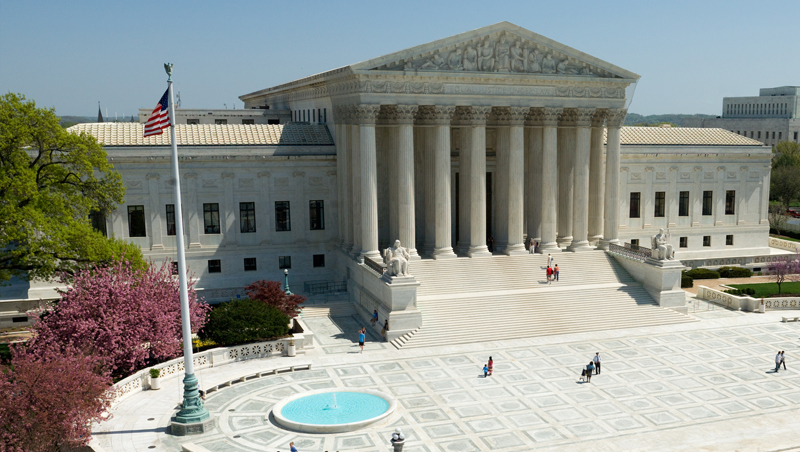CONSTITUTIONAL COURTS
AND LEGISLATIVE COURTS
The Judiciary Act of 1789 established the three levels of the
federal court system in existence today. Periodically, however,
Congress has exercised its power,
based on Article III and Article I of the
Constitution, to create other federal
courts. Courts established under Article III are known as constitutional
courts and those created under Article
I are called legislative courts. The
Supreme Court, courts of appeals, and
federal district courts are constitutional courts.
Legislative courts
include the U.S. Court of Military Appeals, the United States Tax Court, and
the Court of Veterans Appeals.
Legislative courts, unlike their
constitutional counterparts, often have
administrative and quasi-legislative as
well as judicial duties. Another difference is that legislative courts are often
created for the express purpose of
helping to administer a specific congressional statute. Constitutional
courts, on the other hand, are tribunals
established to handle litigation.
Finally, the constitutional and legislative courts vary in their degree of
independence from the other two
branches of government. Article III
(constitutional court)
judges serve during a period of good behavior, or
what amounts to life tenure. Because
Article I (legislative court) judges have
no constitutional guarantee of goodbehavior tenure, Congress may set
specific terms of office for them. In
sum, the constitutional courts have a
greater degree of independence from
the other two branches of government
than the legislative courts.
ADMINISTRATIVE AND
STAFF SUPPORT IN THE
FEDERAL JUDICIARY
Although judges are the most
visible actors in the judicial
system, a large supporting cast
is also at work. Their efforts are necessary to perform the tasks for which
judges are unskilled or unsuited, or for
which they simply do not have adequate time. Some members of the support team, such as law clerks, may
work specifically for one judge. Others
— for example, U.S. magistrate judges
— are assigned to a particular court.
Still others may be employees of an
agency, such as the Administrative Office of the United States Courts, that
serves the entire judicial system.
U.S. Magistrate Judges
In an effort to help federal district
judges deal with increased workloads,
Congress in 1968 created a system of
magistrate judges that responds to
each district court’s specific needs and
circumstances.
Magistrate judges are
appointed by the judges of the district
court for eight-year terms of office, although they can be removed before
the expiration of the term for “good
cause.” Within guidelines set by the
Congress, the judges in each district
court establish the duties and responsibilities of their magistrate judges.
The legislation permits a magistrate
judge, with the consent of the involved
parties, to conduct all proceedings in a
jury or nonjury civil matter and enter
a judgment in the case and to conduct
a trial of persons accused of misdemeanors (less serious offenses than
felonies) committed within the district, provided the defendants consent.
Because the decision to delegate responsibilities to a magistrate judge is
still made by the district judge, however, a magistrate judge’s participation in
the processing of cases may be more
narrow than that permitted by statute

